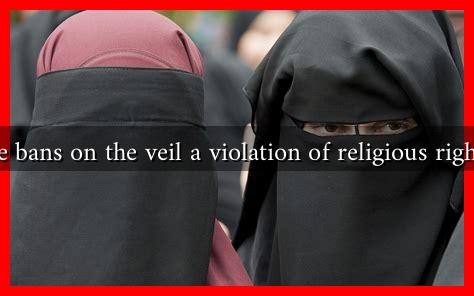-
Table of Contents
Are Bans on the Veil a Violation of Religious Rights?
The debate surrounding bans on the veil, particularly in Western countries, has intensified in recent years. These bans often target specific forms of religious attire, such as the hijab, niqab, or burqa, and raise significant questions about the intersection of religious freedom, cultural identity, and societal norms. This article explores whether such bans constitute a violation of religious rights, examining legal frameworks, societal implications, and personal narratives.
The Legal Landscape of Religious Rights
Religious rights are protected under various international human rights frameworks, including the Universal Declaration of Human Rights (UDHR) and the International Covenant on Civil and Political Rights (ICCPR). Article 18 of the UDHR states that everyone has the right to freedom of thought, conscience, and religion, which includes the freedom to manifest one’s religion or belief in teaching, practice, worship, and observance.
However, the application of these rights can vary significantly by country. For instance:
- France: In 2004, France enacted a law prohibiting the wearing of conspicuous religious symbols in public schools, which includes the hijab. This law was justified on the grounds of secularism, a core principle of the French Republic.
- Belgium: In 2011, Belgium banned the wearing of full-face veils in public spaces, citing security concerns and the need for social cohesion.
- Canada: In contrast, Canada has generally upheld the right to wear religious attire, with courts often siding with individuals who challenge bans on religious expression.
Arguments Supporting the Bans
Proponents of veil bans often argue from several perspectives:
- Secularism: In countries like France, secularism is viewed as a fundamental value that promotes equality and neutrality in public life.
- Security Concerns: Some argue that face-covering veils hinder identification and pose security risks, particularly in public spaces.
- Gender Equality: Advocates claim that banning the veil is a step towards liberating women from oppressive practices associated with certain interpretations of Islam.
Counterarguments: Religious Freedom and Identity
On the other hand, many argue that bans on the veil infringe upon individual rights and freedoms:
- Religious Expression: Wearing a veil is often a deeply personal expression of faith. Banning it can be seen as an infringement on religious rights.
- Cultural Identity: For many Muslim women, the veil is a significant part of their cultural identity. Bans can lead to feelings of alienation and marginalization.
- Discrimination: Critics argue that such bans disproportionately target Muslim women, contributing to systemic discrimination and Islamophobia.
Case Studies and Personal Narratives
Real-life experiences highlight the complexities of this issue. For instance, a study conducted by the Pew Research Center found that a significant percentage of Muslim women in Europe feel that wearing a hijab is an important part of their identity. In countries with bans, many women report feeling pressured to choose between their faith and their public presence.
One notable case is that of Zainab, a young woman from France who was expelled from school for wearing a hijab. She described her experience as not just a personal loss but a broader attack on her identity and beliefs. Such narratives underscore the emotional and psychological impact of these bans.
Conclusion: Balancing Rights and Societal Norms
The question of whether bans on the veil constitute a violation of religious rights is complex and multifaceted. While proponents argue for the necessity of such bans in promoting secularism and security, opponents highlight the fundamental rights to religious expression and cultural identity. As societies continue to grapple with these issues, it is crucial to foster dialogue that respects both individual freedoms and collective values.
Ultimately, the challenge lies in finding a balance that honors religious rights while addressing legitimate societal concerns. As the global landscape evolves, ongoing discussions and legal challenges will shape the future of religious expression in public life.
For further reading on this topic, you can explore resources from the Human Rights Watch.

